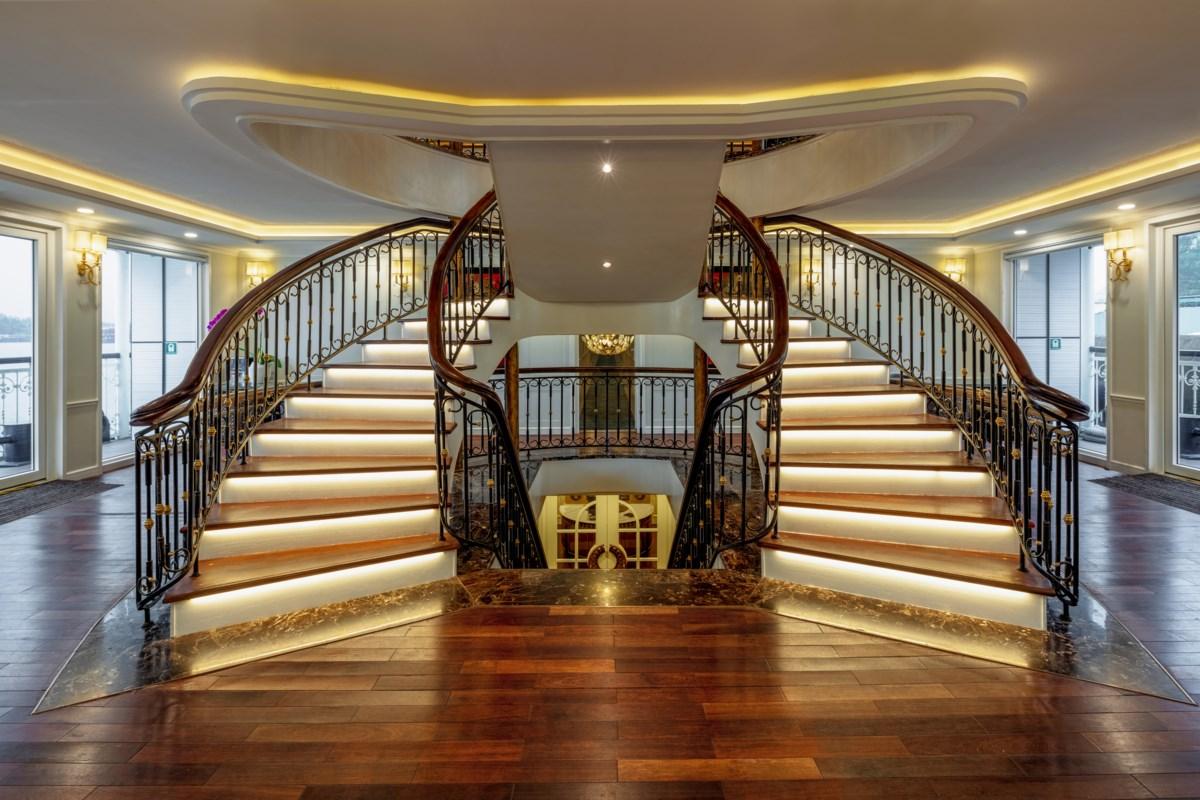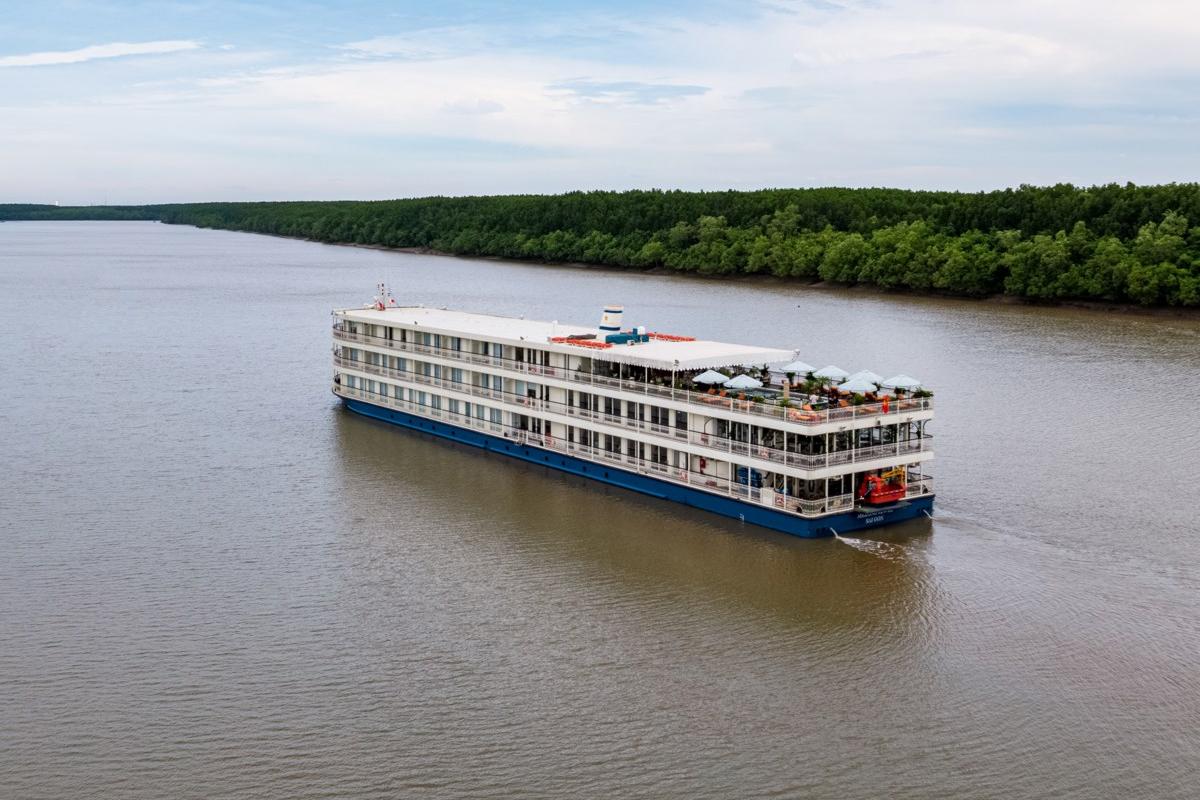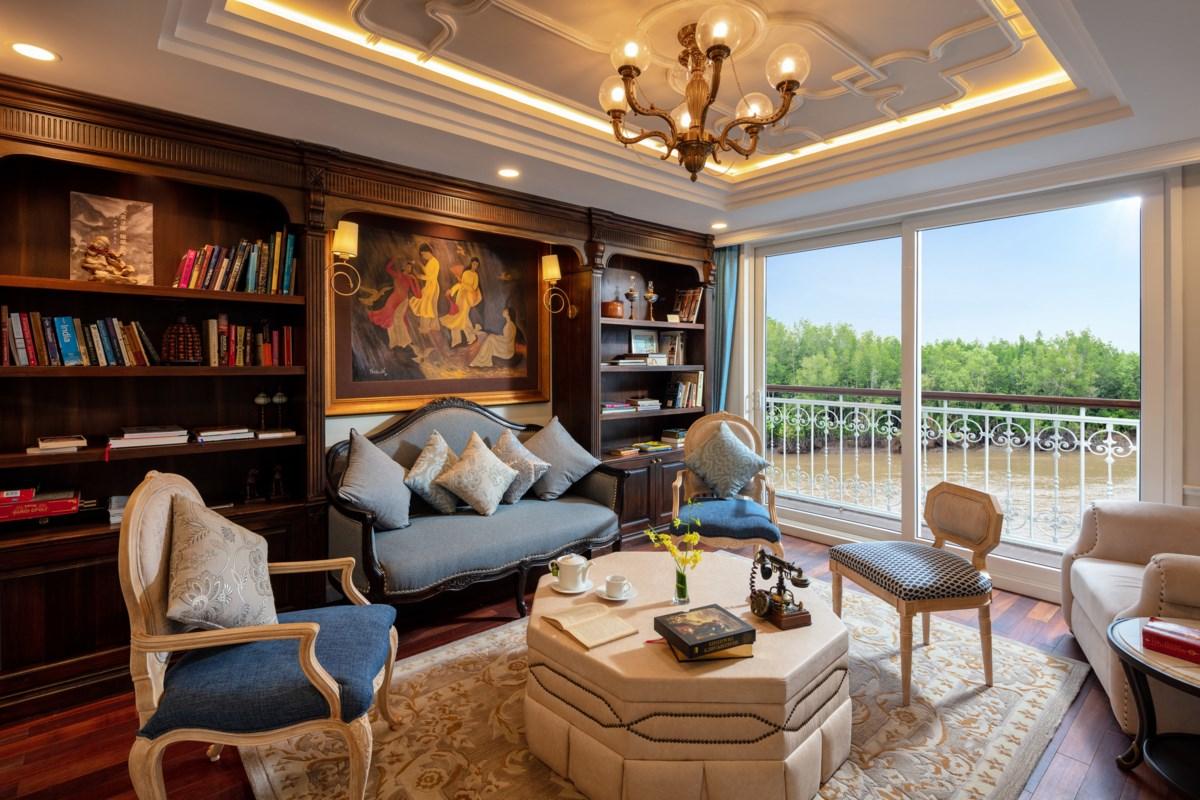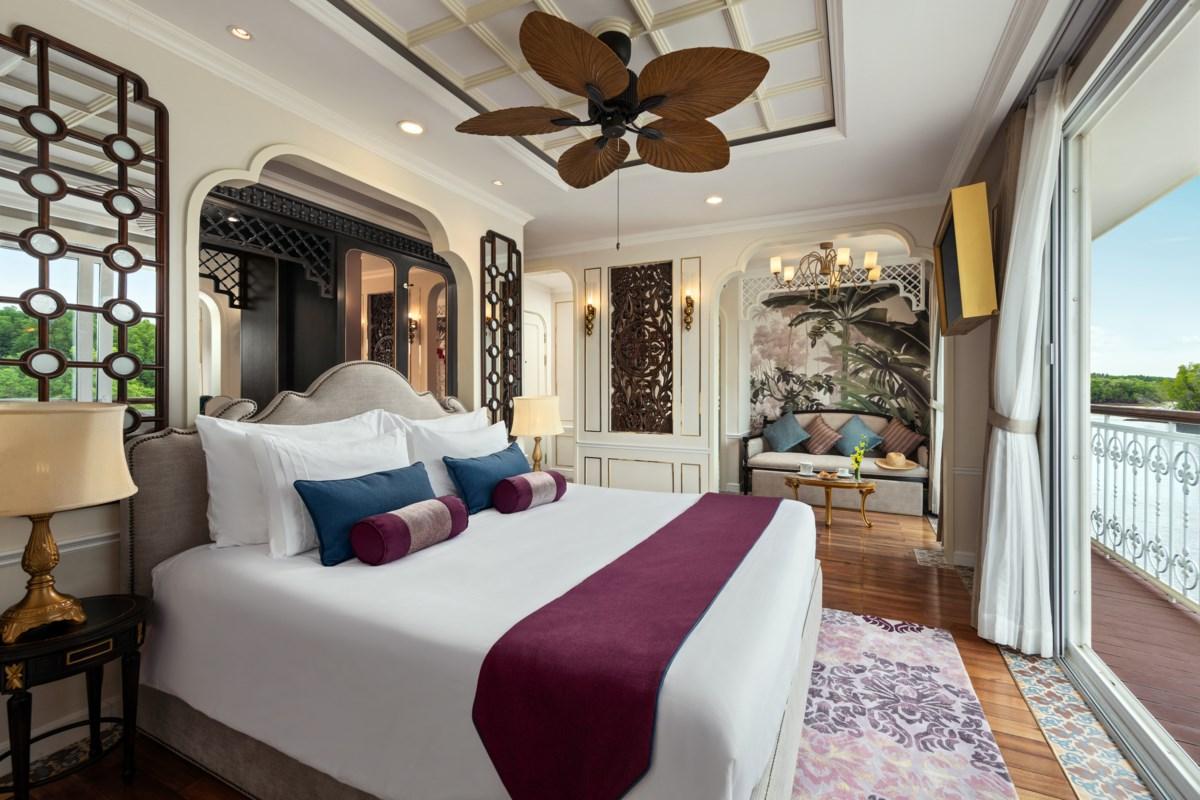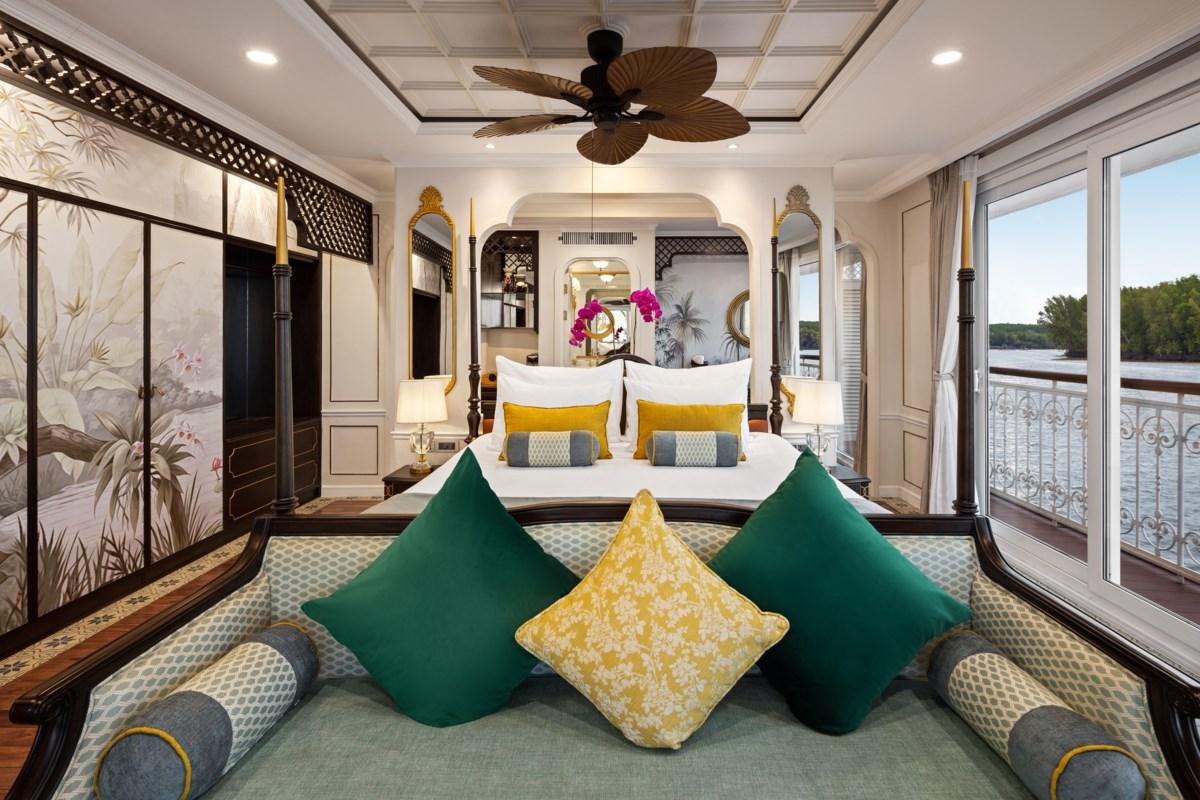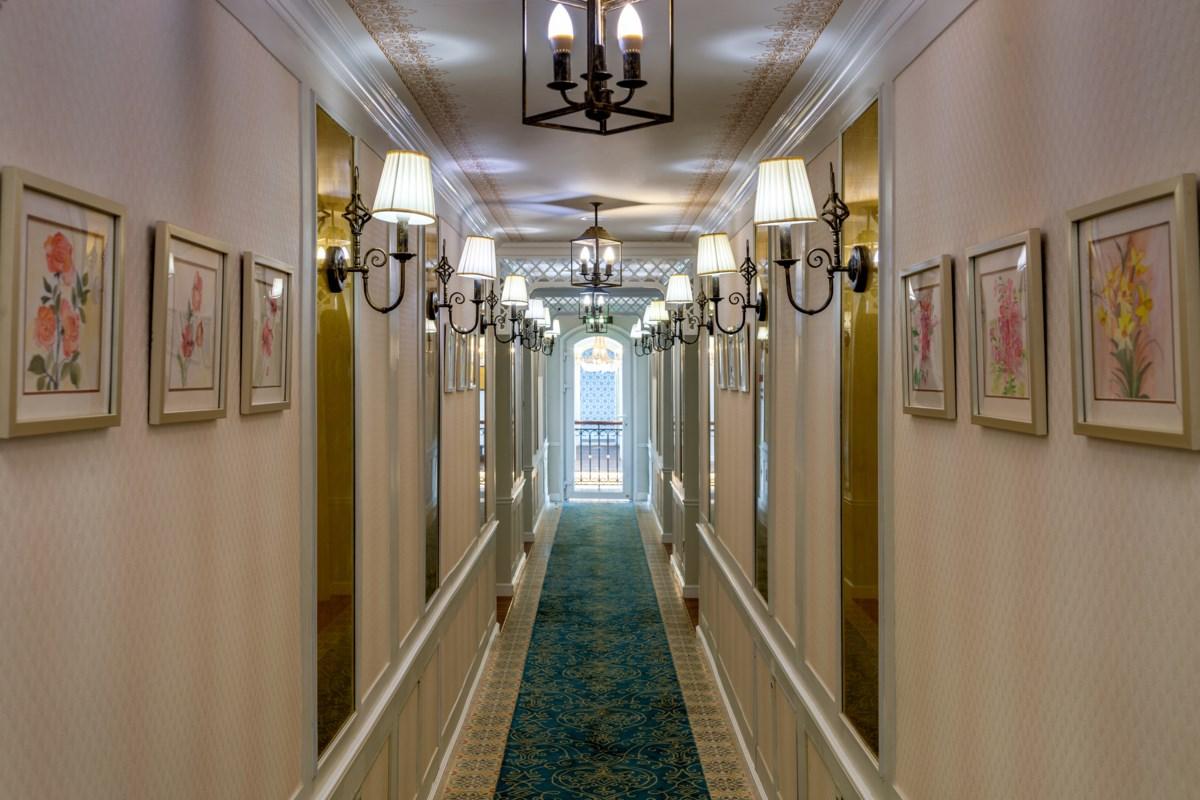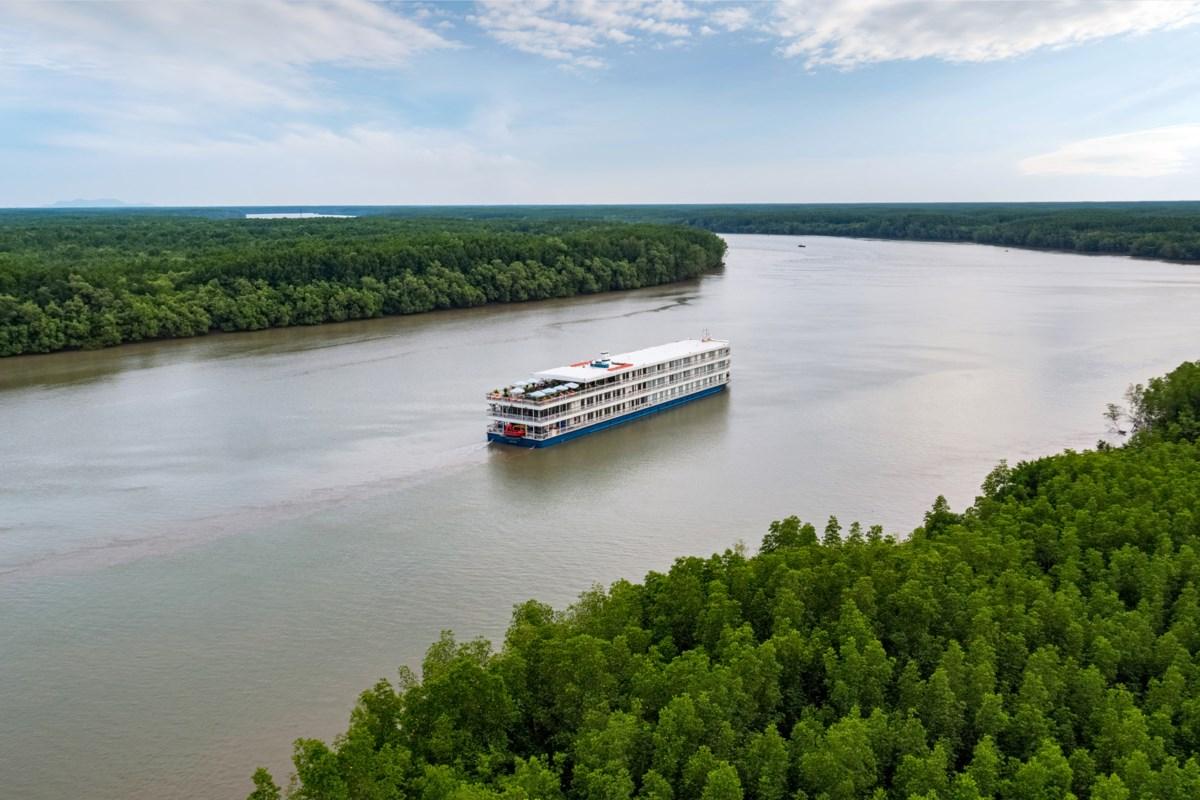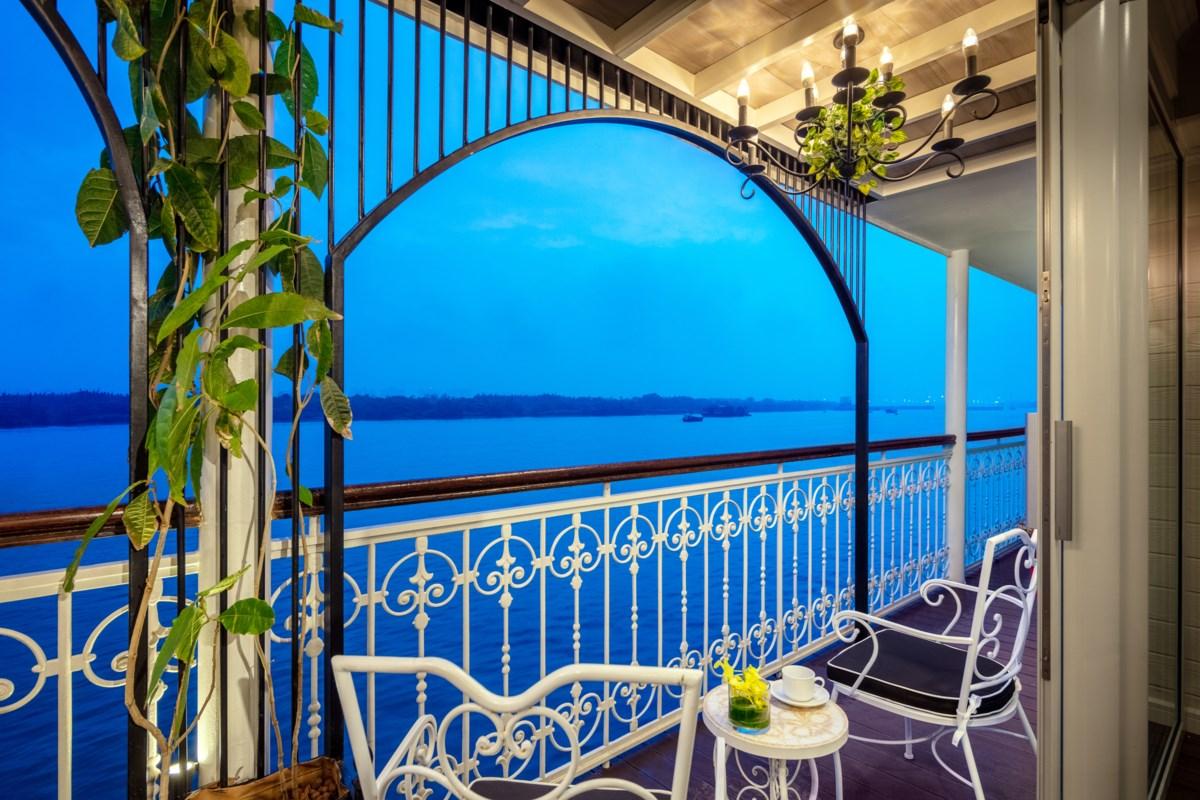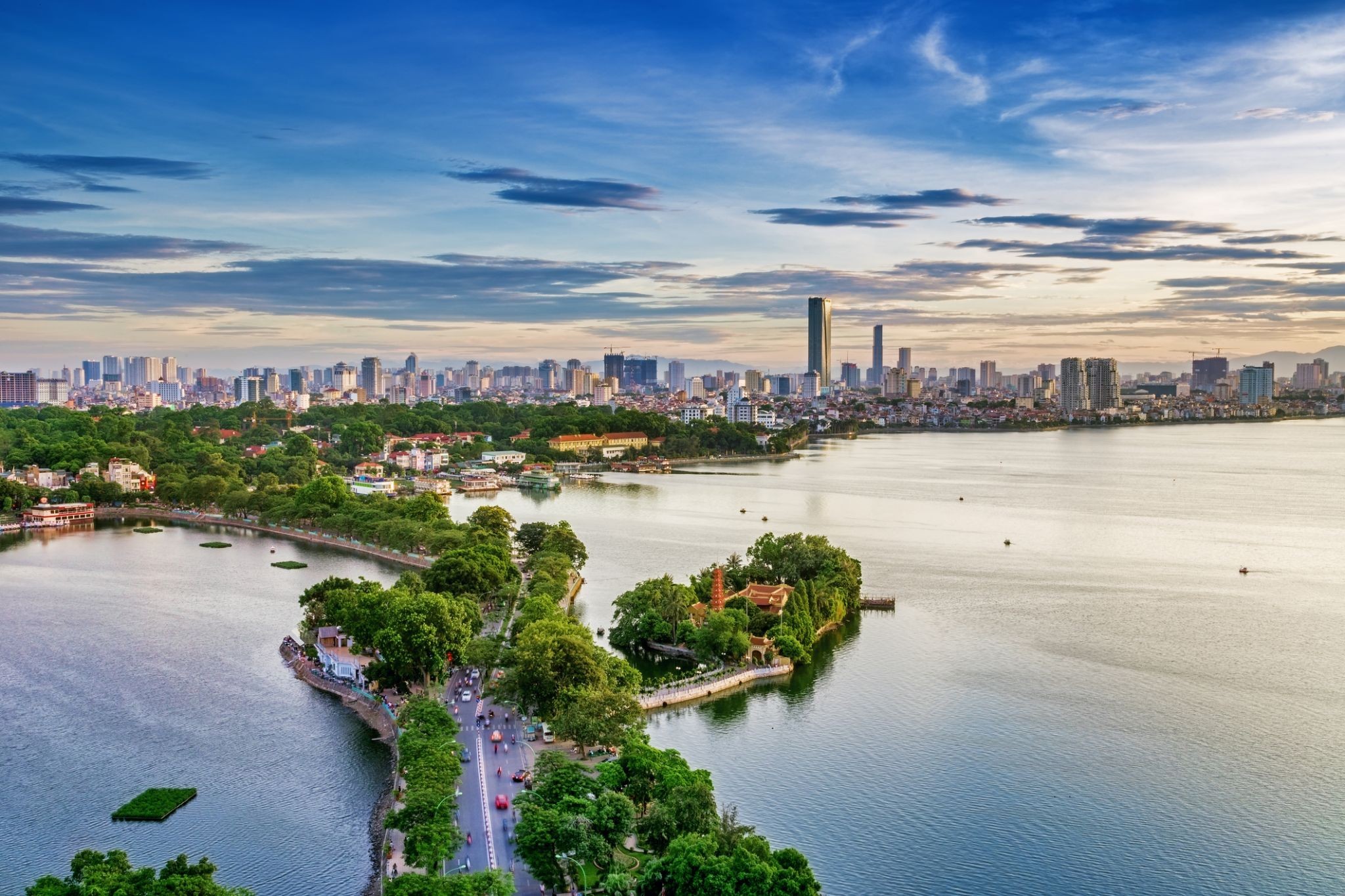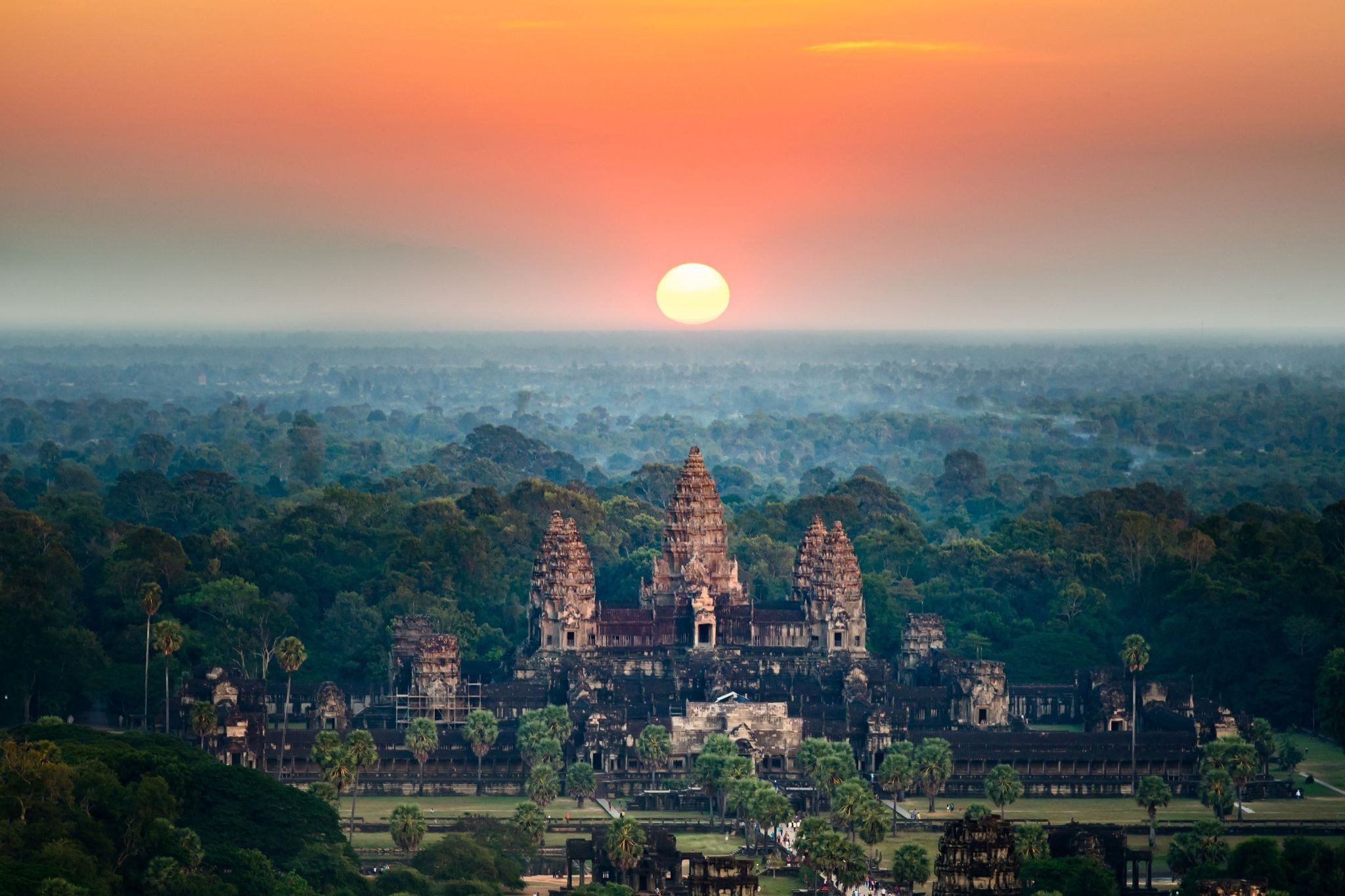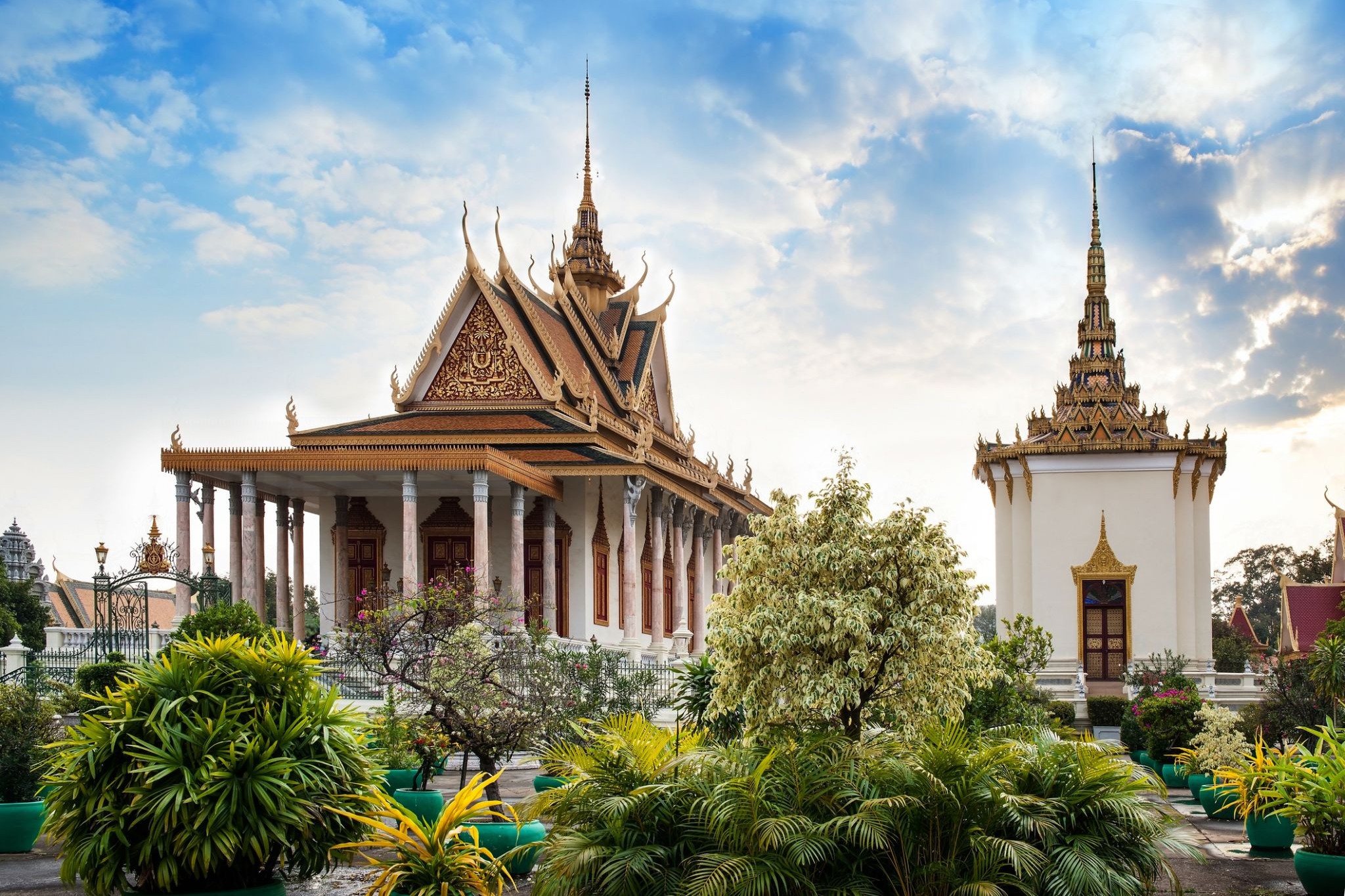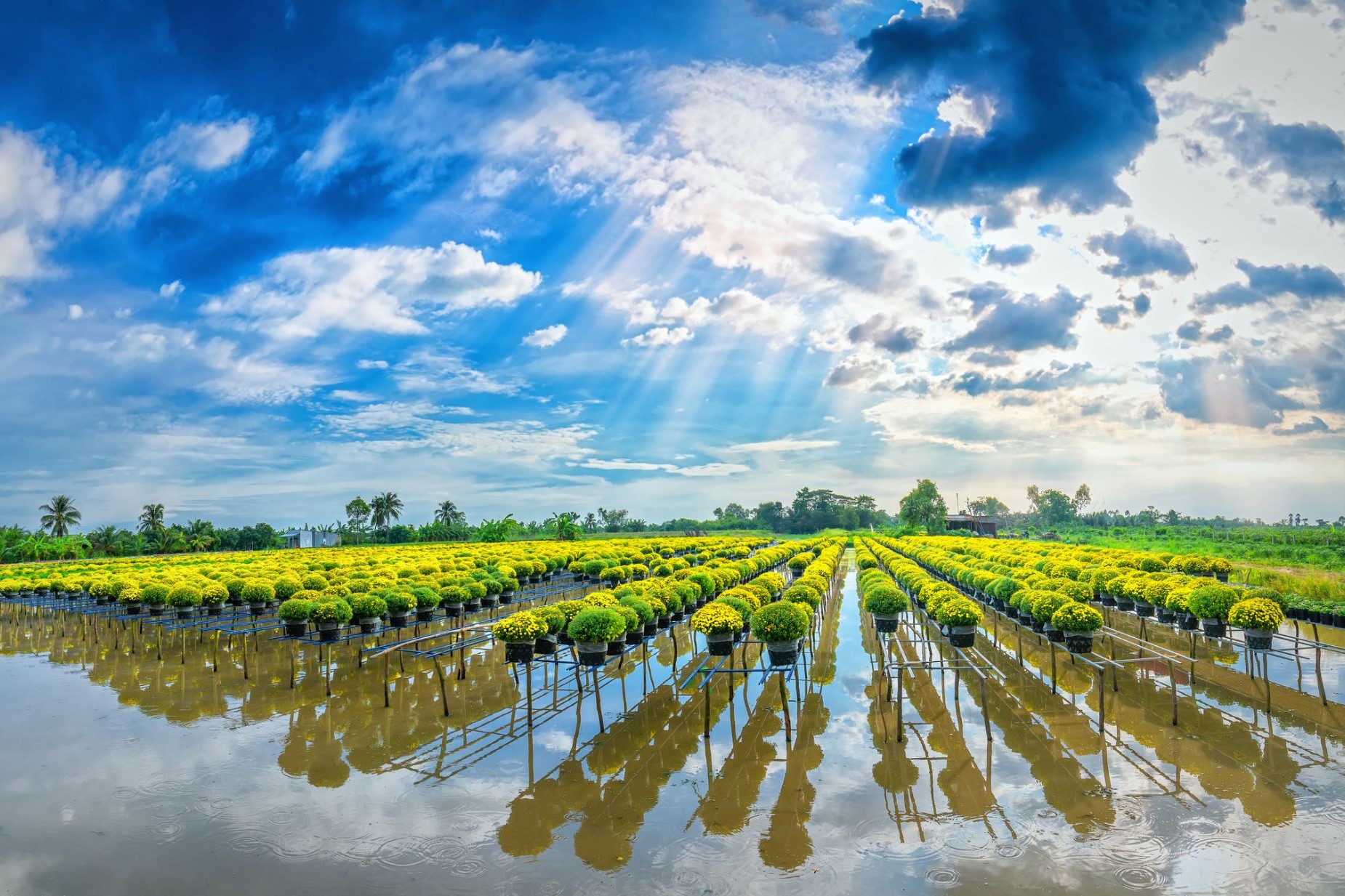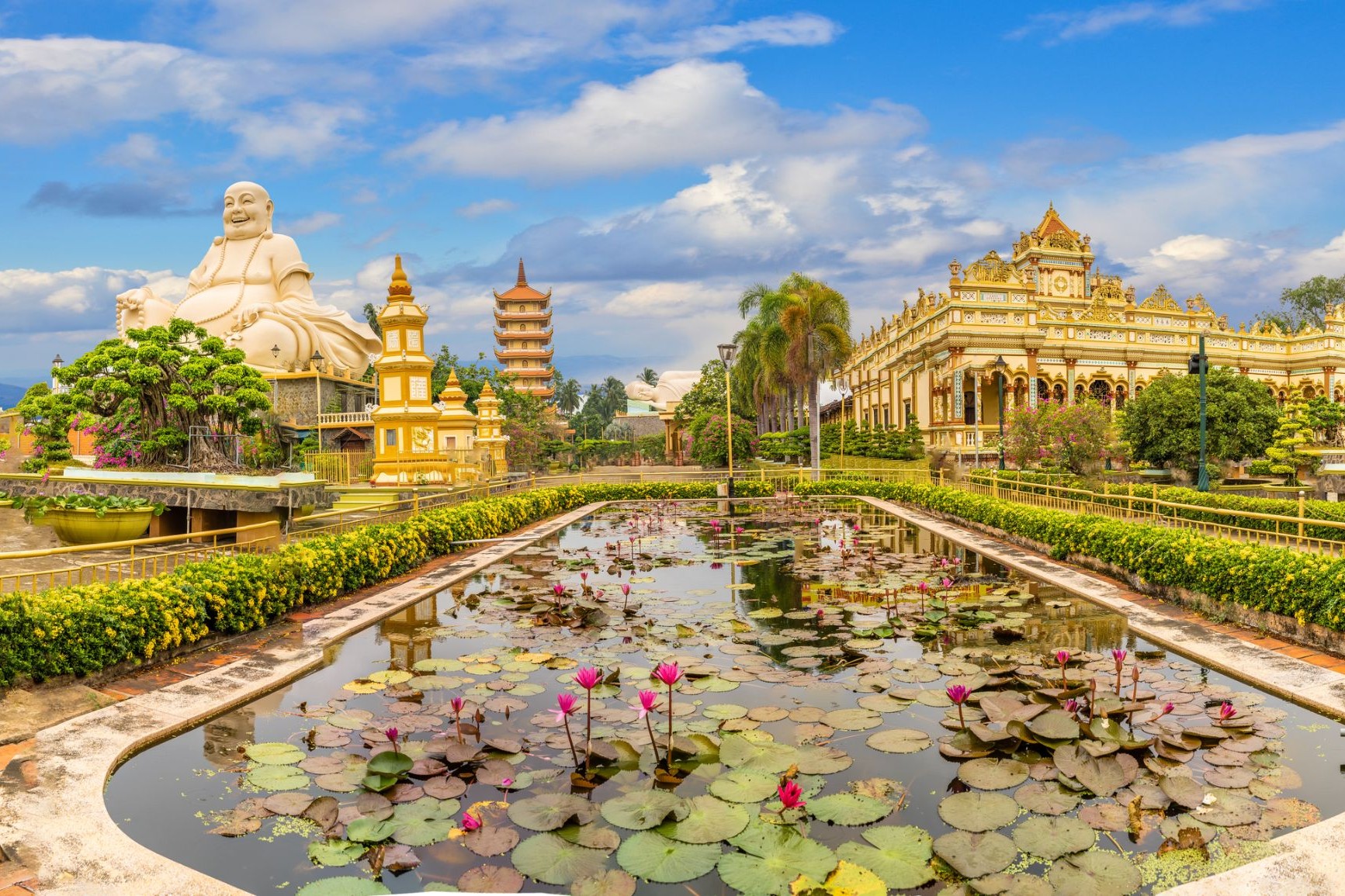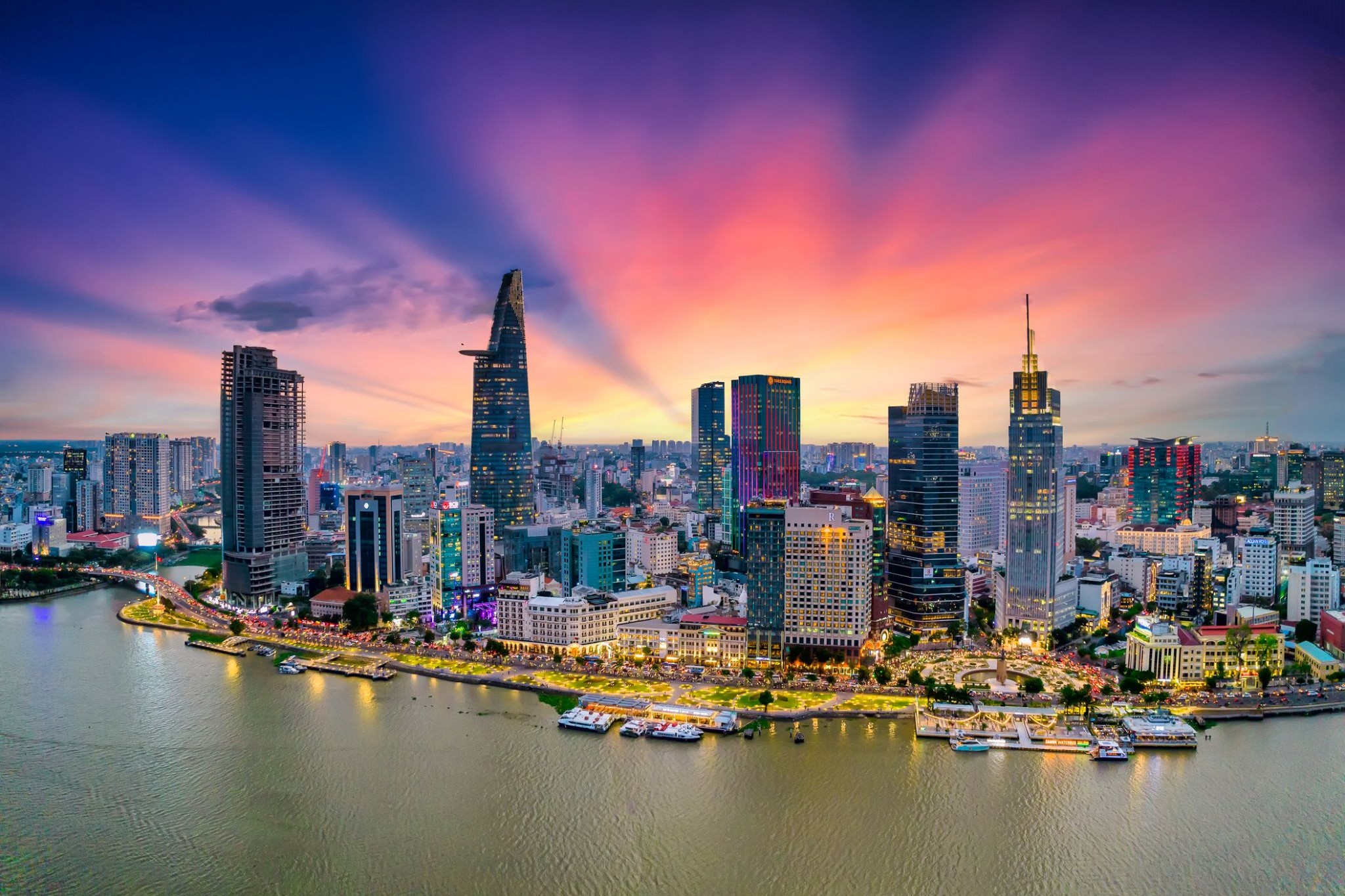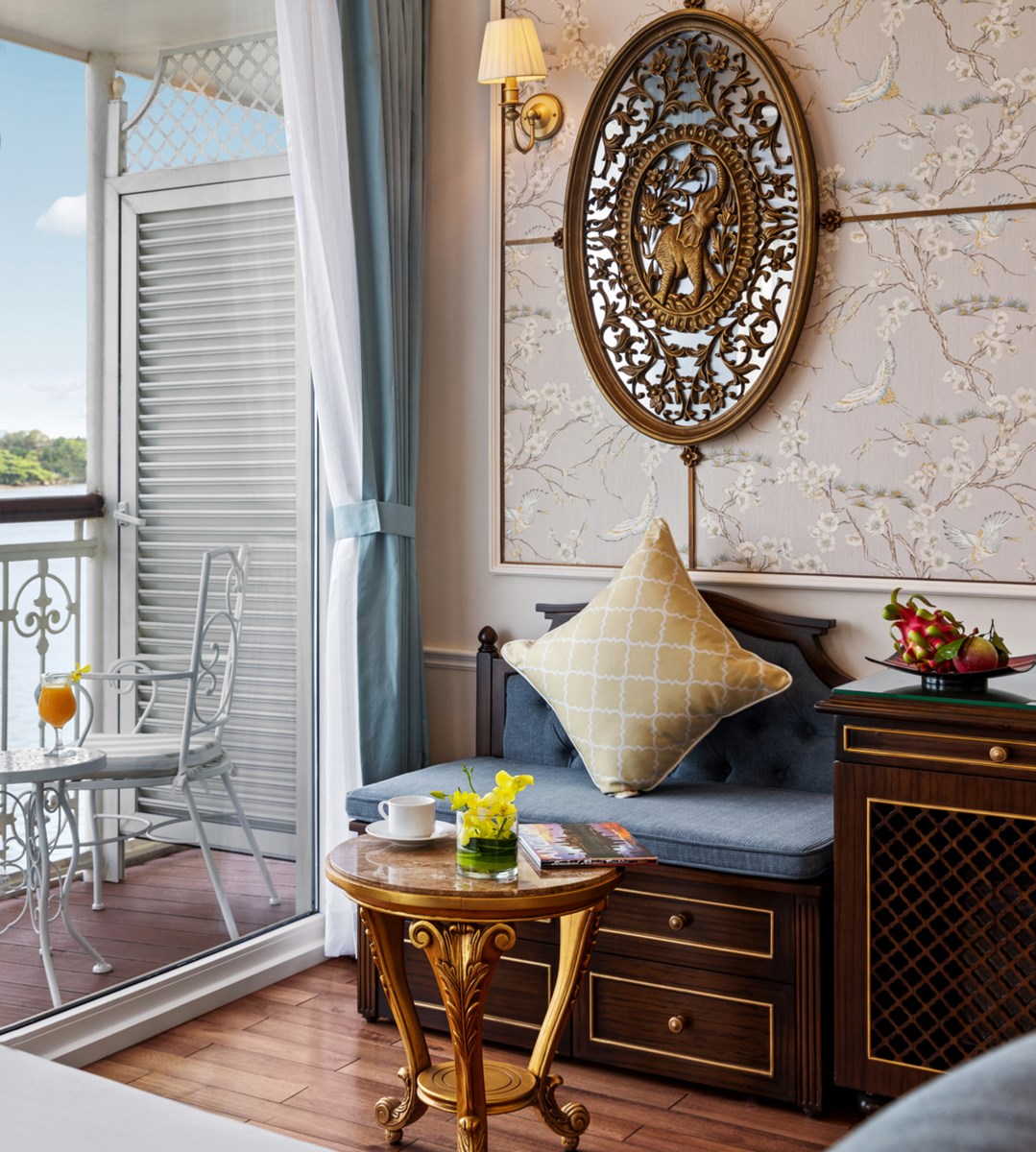Cruise: 30,877,290
Timeless Wonders of Vietnam, Cambodia & the Mekong (2025)
| Company : Uniworld |
| Ship : Mekong Jewel |
| Journey Start : Thu 13 Nov 2025 |
| Journey End : Thu 27 Nov 2025 |
| Count Nights : 14 nights |
Schedule
| Day | Date | Port |
|---|---|---|
| 1 | 13.11 Thu | Hanoi / Vietnam |
| 2 | 14.11 Fri | Hanoi / Vietnam |
| 3 | 15.11 Sat | Siem Reap / Cambodia |
| 4 | 16.11 Sun | Siem Reap / Cambodia |
| 5 | 17.11 Mon | Siem Reap / Cambodia |
| 6 | 18.11 Tue | Siem Reap / Cambodia |
| 7 | 19.11 Wed | Phnom Penh / Cambodia |
| 8 | 20.11 Thu | Phnom Penh / Cambodia |
| 9 | 21.11 Fri | Phnom Penh / Cambodia |
| 10 | 22.11 Sat | Sa Dec / Vietnam |
| 11 | 23.11 Sun | Sa Dec / Vietnam |
| 12 | 24.11 Mon | Mỹ Tho / Vietnam |
| 13 | 25.11 Tue | Ho Chi Minh / Vietnam |
| 14 | 26.11 Wed | Ho Chi Minh / Vietnam |
| 15 | 27.11 Thu | Ho Chi Minh / Vietnam |
-
 Day 1:
Day 1:Hanoi / Vietnam
Hanoi is the capital of Vietnam, a city with a thousand-year history, formerly known as Thang Long, which translates as “City of the Soaring Dragon.” Despite the abundance of pagodas, architectural landmarks, and bustling marketplaces, the city is not overcrowded with tourists, allowing visitors to enjoy its charm without haste or crowds.
-
 Day 2:
Day 2:Hanoi / Vietnam
Hanoi is the capital of Vietnam, a city with a thousand-year history, formerly known as Thang Long, which translates as “City of the Soaring Dragon.” Despite the abundance of pagodas, architectural landmarks, and bustling marketplaces, the city is not overcrowded with tourists, allowing visitors to enjoy its charm without haste or crowds.
-
 Day 3:
Day 3:Siem Reap / Cambodia
Among the many corners of Southeast Asia filled with culture and history, the picturesque city of Siem Reap stands out. This city serves as the gateway to the ancient temples of Angkor — one of the largest archaeological complexes in the world. The narrow streets and bustling markets of Siem Reap create a unique atmosphere that blends Khmer cultural traditions with modern life. Tourists come here not only to see the famous temples but also to enjoy rich cuisine, local crafts, and vibrant festivals. Numerous cozy cafes and welcoming hotels make Siem Reap an ideal place to relax after a busy day of sightseeing and discovery. This city offers a unique combination of history, culture, and natural beauty, attracting travelers from all over the world. -
 Day 4:
Day 4:Siem Reap / Cambodia
Among the many corners of Southeast Asia filled with culture and history, the picturesque city of Siem Reap stands out. This city serves as the gateway to the ancient temples of Angkor — one of the largest archaeological complexes in the world. The narrow streets and bustling markets of Siem Reap create a unique atmosphere that blends Khmer cultural traditions with modern life. Tourists come here not only to see the famous temples but also to enjoy rich cuisine, local crafts, and vibrant festivals. Numerous cozy cafes and welcoming hotels make Siem Reap an ideal place to relax after a busy day of sightseeing and discovery. This city offers a unique combination of history, culture, and natural beauty, attracting travelers from all over the world. -
 Day 5:
Day 5:Siem Reap / Cambodia
Among the many corners of Southeast Asia filled with culture and history, the picturesque city of Siem Reap stands out. This city serves as the gateway to the ancient temples of Angkor — one of the largest archaeological complexes in the world. The narrow streets and bustling markets of Siem Reap create a unique atmosphere that blends Khmer cultural traditions with modern life. Tourists come here not only to see the famous temples but also to enjoy rich cuisine, local crafts, and vibrant festivals. Numerous cozy cafes and welcoming hotels make Siem Reap an ideal place to relax after a busy day of sightseeing and discovery. This city offers a unique combination of history, culture, and natural beauty, attracting travelers from all over the world. -
 Day 6:
Day 6:Siem Reap / Cambodia
Among the many corners of Southeast Asia filled with culture and history, the picturesque city of Siem Reap stands out. This city serves as the gateway to the ancient temples of Angkor — one of the largest archaeological complexes in the world. The narrow streets and bustling markets of Siem Reap create a unique atmosphere that blends Khmer cultural traditions with modern life. Tourists come here not only to see the famous temples but also to enjoy rich cuisine, local crafts, and vibrant festivals. Numerous cozy cafes and welcoming hotels make Siem Reap an ideal place to relax after a busy day of sightseeing and discovery. This city offers a unique combination of history, culture, and natural beauty, attracting travelers from all over the world. -
 Day 7:
Day 7:Phnom Penh / Cambodia
-
 Day 8:
Day 8:Phnom Penh / Cambodia
-
 Day 9:
Day 9:Phnom Penh / Cambodia
-
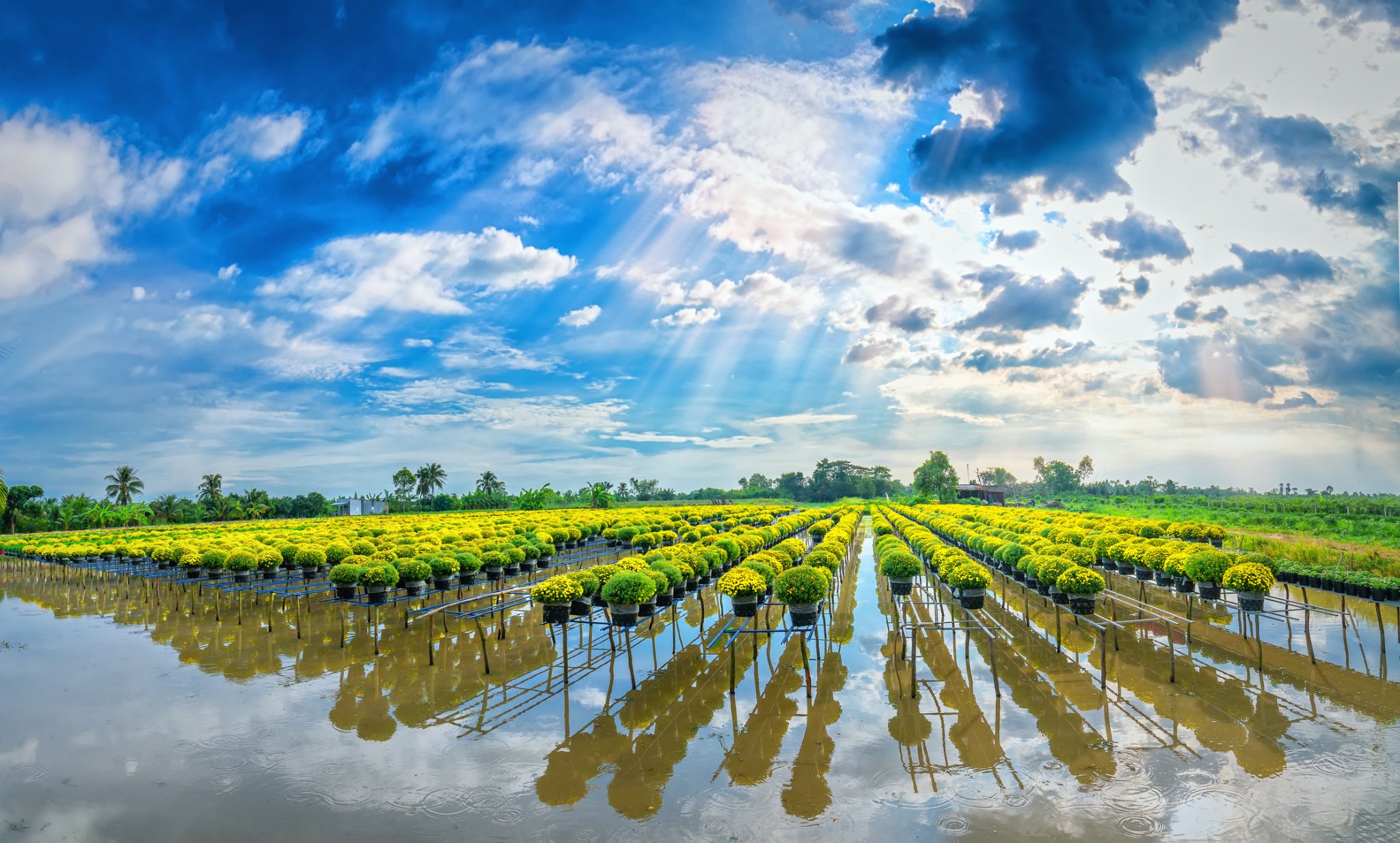 Day 10:
Day 10:Sa Dec / Vietnam
-
 Day 11:
Day 11:Sa Dec / Vietnam
-
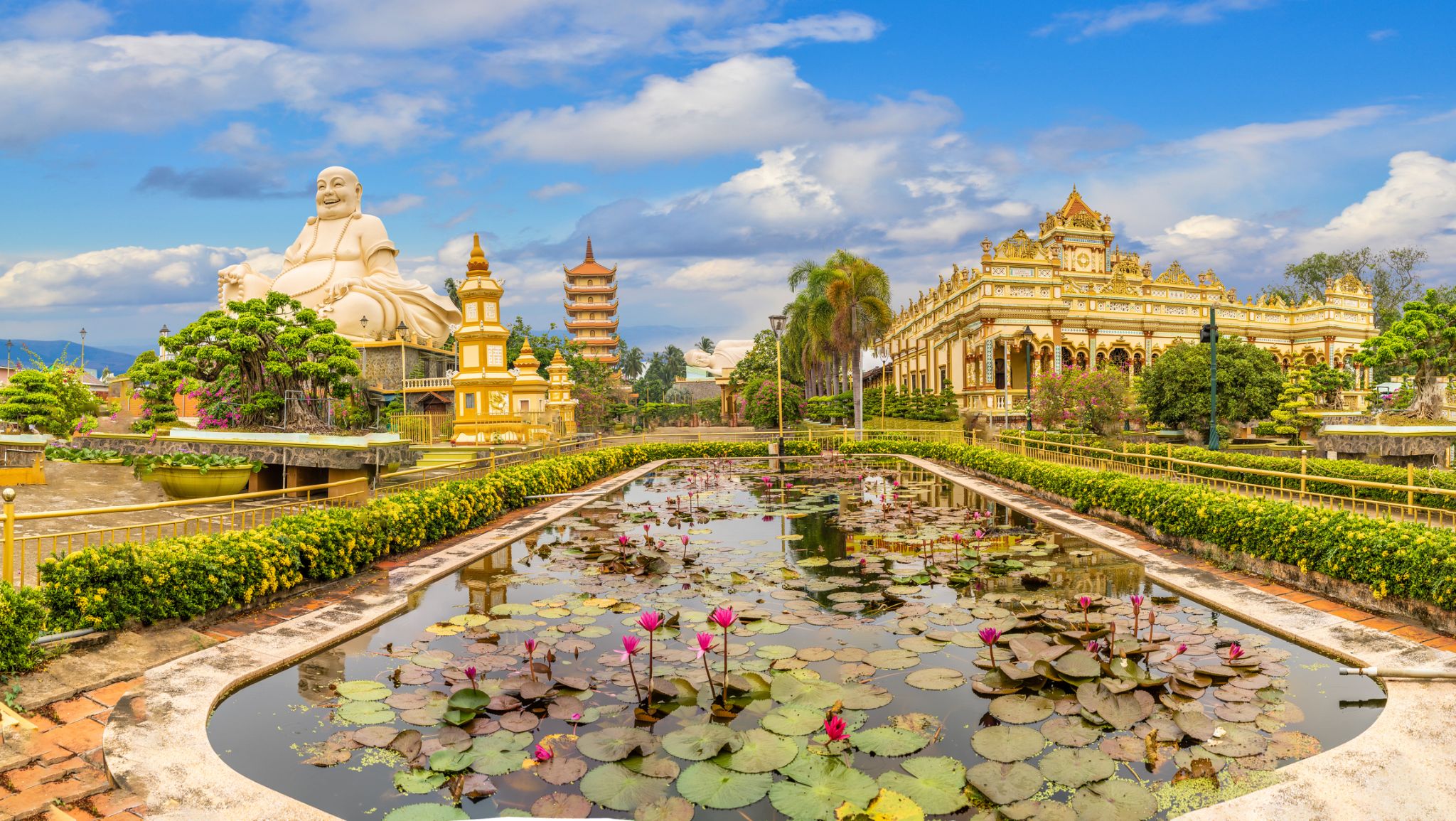 Day 12:
Day 12:Mỹ Tho / Vietnam
-
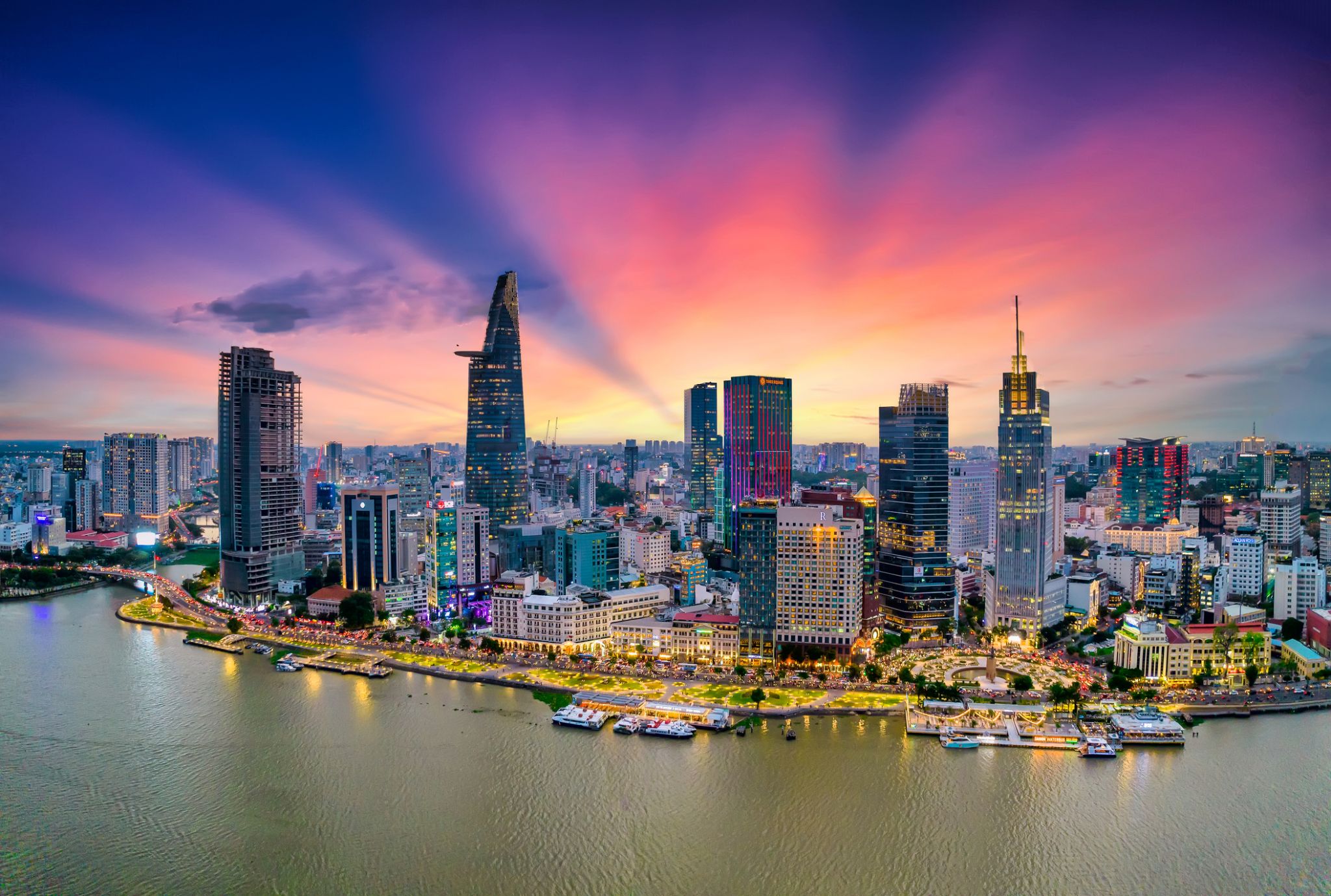 Day 13:
Day 13:Ho Chi Minh / Vietnam
Ho Chi Minh City, also known by its former name of Saigon is the most populous city in Vietnam with a population of 8.4 million (13 million in the metropolitan area) as of 2017. Located in southeast Vietnam, the metropolis surrounds the Saigon River and covers about 2,061 square kilometres (796 square miles).
Under the name Saigon, it was the capital of French Indochina from 1887 to 1902 and again from 1945 to 1954. Saigon would later become the capital of South Vietnam from 1955 until its fall in 1975. On 2 July 1976, Saigon merged with the surrounding Gia Định Province and was officially renamed Ho Chi Minh City after revolutionary leader Hồ Chí Minh (although the name Sài Gòn is still widely used).
Ho Chi Minh City is the financial centre of Vietnam and is classifed as a Beta+ World City by Globalization and World Cities Research Network. It is home to the Ho Chi Minh City Stock Exchange, the largest stock exchange by total market capitalization in Vietnam and the headquarters of many national and international banks and companies.
Ho Chi Minh City is the most visited city in Vietnam, with 6.3 million visitors in 2017. Many of the city's landmarks which are well known to international visitors include the Bến Thành Market, Ho Chi Minh City Hall, Notre-Dame Cathedral Basilica of Saigon, Independence Palace and the Municipal Theatre. The main passenger airport serving the metropolitan area is Tan Son Nhat International Airport, it is the busiest airport in Vietnam handling 36 million passengers in 2017.
-
 Day 14:
Day 14:Ho Chi Minh / Vietnam
Ho Chi Minh City, also known by its former name of Saigon is the most populous city in Vietnam with a population of 8.4 million (13 million in the metropolitan area) as of 2017. Located in southeast Vietnam, the metropolis surrounds the Saigon River and covers about 2,061 square kilometres (796 square miles).
Under the name Saigon, it was the capital of French Indochina from 1887 to 1902 and again from 1945 to 1954. Saigon would later become the capital of South Vietnam from 1955 until its fall in 1975. On 2 July 1976, Saigon merged with the surrounding Gia Định Province and was officially renamed Ho Chi Minh City after revolutionary leader Hồ Chí Minh (although the name Sài Gòn is still widely used).
Ho Chi Minh City is the financial centre of Vietnam and is classifed as a Beta+ World City by Globalization and World Cities Research Network. It is home to the Ho Chi Minh City Stock Exchange, the largest stock exchange by total market capitalization in Vietnam and the headquarters of many national and international banks and companies.
Ho Chi Minh City is the most visited city in Vietnam, with 6.3 million visitors in 2017. Many of the city's landmarks which are well known to international visitors include the Bến Thành Market, Ho Chi Minh City Hall, Notre-Dame Cathedral Basilica of Saigon, Independence Palace and the Municipal Theatre. The main passenger airport serving the metropolitan area is Tan Son Nhat International Airport, it is the busiest airport in Vietnam handling 36 million passengers in 2017.
-
 Day 15:
Day 15:Ho Chi Minh / Vietnam
Ho Chi Minh City, also known by its former name of Saigon is the most populous city in Vietnam with a population of 8.4 million (13 million in the metropolitan area) as of 2017. Located in southeast Vietnam, the metropolis surrounds the Saigon River and covers about 2,061 square kilometres (796 square miles).
Under the name Saigon, it was the capital of French Indochina from 1887 to 1902 and again from 1945 to 1954. Saigon would later become the capital of South Vietnam from 1955 until its fall in 1975. On 2 July 1976, Saigon merged with the surrounding Gia Định Province and was officially renamed Ho Chi Minh City after revolutionary leader Hồ Chí Minh (although the name Sài Gòn is still widely used).
Ho Chi Minh City is the financial centre of Vietnam and is classifed as a Beta+ World City by Globalization and World Cities Research Network. It is home to the Ho Chi Minh City Stock Exchange, the largest stock exchange by total market capitalization in Vietnam and the headquarters of many national and international banks and companies.
Ho Chi Minh City is the most visited city in Vietnam, with 6.3 million visitors in 2017. Many of the city's landmarks which are well known to international visitors include the Bến Thành Market, Ho Chi Minh City Hall, Notre-Dame Cathedral Basilica of Saigon, Independence Palace and the Municipal Theatre. The main passenger airport serving the metropolitan area is Tan Son Nhat International Airport, it is the busiest airport in Vietnam handling 36 million passengers in 2017.

